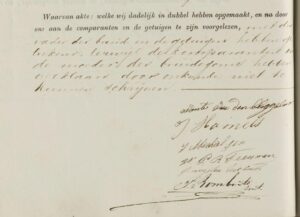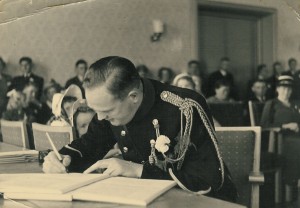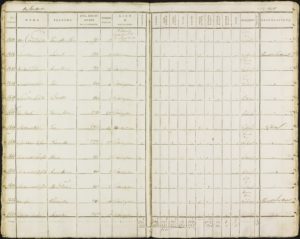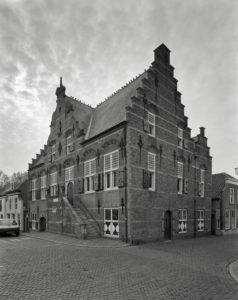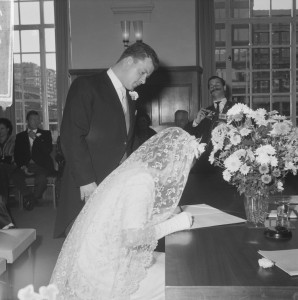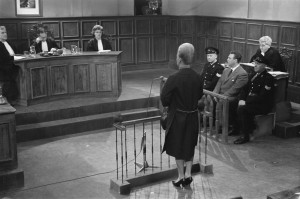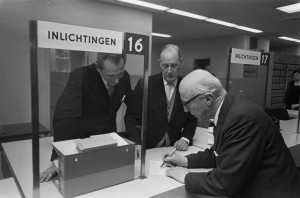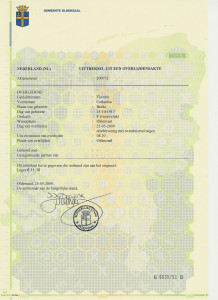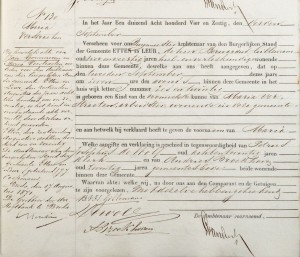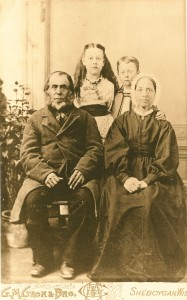If you are looking at a civil registration record, the last part will identify who signed the record. If any of the people were illiterate or had other reasons not to sign, it would say so. Example: Biggelaar-Rens marriage record On 1 May 1858, my ancestors Hubertus van den Biggelaar and Anna Maria Rens were married in Terheijden. The bottom of their marriage record described who signed the record. It was signed (translation) "with the father of the bride and the witnesses, while the parties … [Read more...]
Level 2 Checklist – Vital Statistics
Last month I issued my Level-Up Challenge, challenging you to assess how complete your research is. Level 2 is vital statistics only. In this blog post, I will explain which sources I feel I need to have found or searched for in order to say I have reached level 2. For each vital event, I want to have found at least one of the sources indicated here so I know where and when a person was born, married, and died. Date and place of birth Birth record (civil registration) I want to find … [Read more...]
Quick tip – Some records may be in French (1795-1813)
From 1795 to 1813, the Netherlands was under French rule. As a result, some of the records created in this period were in French. This includes the earliest registers of the civil registration of births, marriages, and deaths. The civil registration was introduced in 1811 in most parts of the country, and as early as 1794 or 1795 in parts of Zeeland and Limburg. The records for the period up to 1813 are in French. The census taken around 1811 is also in French. … [Read more...]
Dutch term – Gemeentehuis
The Gemeentehuis (house of the municipality) or raadhuis (house of the council) is the town hall. In civil registration records, you will often encounter the gemeentehuis as the place where births, marriages and deaths were recorded. Civil marriages often take place at town hall. It also houses the offices of the mayor, municipal council and municipal clerks. Gemeentehuizen were originally found in the center of the town. In the 1900s, when bureaucracy increased, many places had larger town … [Read more...]
How Civil Registration Records were Created
If you are researching nineteenth and twentieth century Dutch ancestors, the civil registration records of births, marriages and deaths are among the first sources you should consult. Understanding how these records were created will help you assess their reliability. Birth records When the civil registration was introduced nation-wide in 1811, the law required that baby be presented at town hall, to make sure that a birth actually took place. Since this could be dangerous to the child, … [Read more...]
Dutch term – Akte van Bekendheid
An akte van bekendheid is a record of knowledge, usually a statement by four witnesses who all testify about the truth of something. For example, when people got married after 1811, they had to submit extracts of their birth records and sometimes also extracts of the death records of their parents, former spouses and even grandparents (in the case of under-age orphans). In some cases, these records did not exist and could not be extracted. If they could not produce these records, they drummed … [Read more...]
How to obtain certified copies of birth, marriage or death records from the Netherlands
I often receive requests by people who need to obtain official certificates of Dutch birth, marriage or death records for legal purposes. Obtaining certified copies is not a service I provide, so I will give you the instructions on how to do this yourself. Reasons for needing a certified copy There may be several reasons why you need an official extract of a birth, marriage or death record in the Netherlands, for example: You were born in the Netherlands and need proof of your birth in … [Read more...]
Dutch term – Gewaarmerkte kopie
A gewaarmerkte kopie is a certified copy. When ordering a record, like your own birth record, you may be asked if you want a regular copy or a certified copy. Certified copies will be printed on special paper and will have a seal by the municipality guaranteeing authenticity. For genealogical purposes, a regular photocopy will suffice. In fact, a regular photocopy can be more reliable for genealogical purposes than a certified copy since certified copies are sometimes extracted and retyped … [Read more...]
Quick tip – Check the margins of a record
If you consult an original record, make sure to check the margins for any notes. For example, the margins of a birth record may tell you that an illegitimate child was later acknowledged by a man who married the mother. The margins may also contain corrections of the main text, for example if an error was made. These corrections can be made at the time of creation, but can also be ordered by the court many years later, for example if a mistake in the gender or name of a child was only … [Read more...]
Quick tip – Dutch immigrants kept great records
The other day, my friend Mary and I were talking about Dutch immigrants to Wisconsin. She explained that in Wisconsin, registration of births, marriages and deaths wasn't mandated until 1907. Dutch immigrants had been used to civil registration since 1811. Unlike many of their new neighbors, they were used to having their vital events recorded and continued to do so after emigration. It is not uncommon to find a marriage record for a Dutch couple in Wisconsin in the 1850s or 1860s, fifty years … [Read more...]
